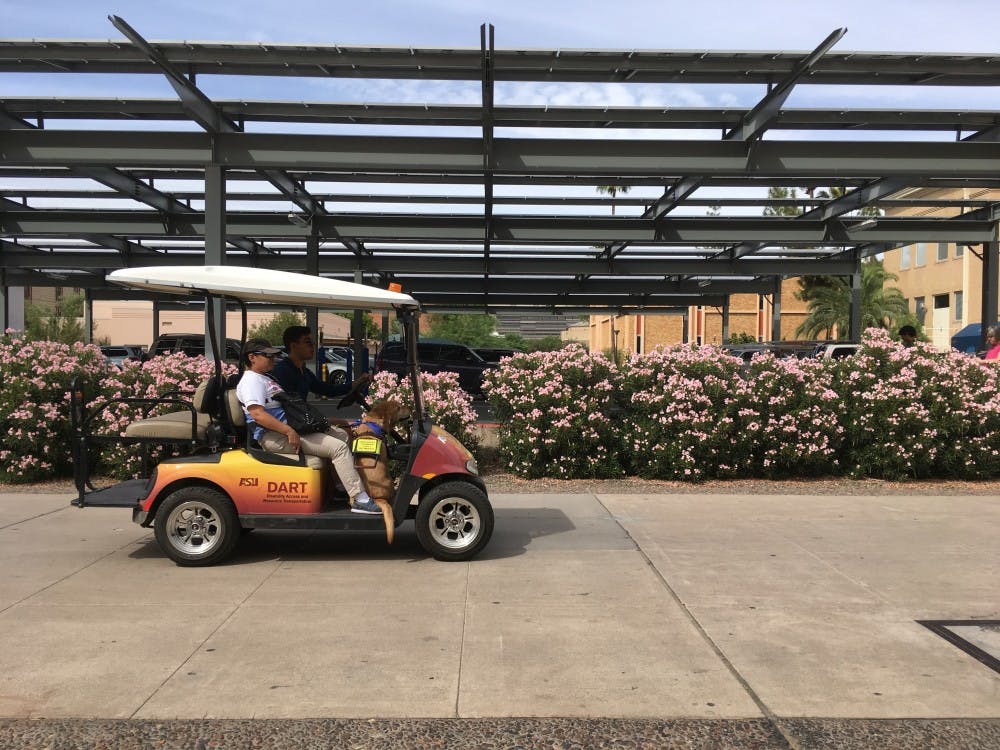There are more than 4,000 students with disabilities studying at ASU, but for most, these disabilities are invisible to the naked eye, providing a set of unique challenges to their lives.
For these students, some of whom deal with issues including ADHD, dyslexia and other learning disabilities, the everyday struggle of University life is an even greater challenge.
However, ASU has provided resources for these students in the form of the Disability Resource Center, or DRC, where students can go to receive the aid they need.
“There are a wide range of disabilities that we deal with, but a lot of them you wouldn’t know just looking at them, they have a disability,” said Adero Allison, a disability access consultant and technology specialist with the DRC. “Most of the disabilities we serve are invisible, so it could be cognitive disabilities, mental health issues, could be learning disabilities or ADHD.”
The tools provided by the University are tailored for each student, she said, giving them a personalized plan for taking tests, reading alternative format textbooks or any other accommodation they might need.
However, these tools for the students are not designed to give students with disabilities an easier time in college than any other student.
Related Story: Safety for the blind: downtown Phoenix proves hazardous for ASU students with disabilities
“The challenge (is) people not thinking they’re capable when they really are,” Allison said. “All the student that come through our offices have to follow all of the same guidelines to get into the programs that other students have to pass. They have to be qualified for the programs to get into the university and they have to maintain that qualification.”
To put these students on a level playing field with their non-disability peers, resources such as dedicated testing centers and note-taking services, as well as more specialized tools are shared between all four main campuses.
“There’s not any accommodation that you could get in one place but not the others,” said Alicia Wackerly-Painter, assistant director of the DCR’s Downtown Phoenix office. “We will always be striving to find ways to make sure we’re supporting them because access is what we’re here for.”
She pointed out that all the students need to do is ask, and the DRC at their preferred campus can work to accommodate them. At the Downtown Phoenix campus alone, approximately 350 students are using the services the DRC provides in the fall 2016 semester.
“We provide accommodations to students university-wide based on their need, so based on their disability and the impact of their disability,” Wackerly-Painter said.
As the DRC has grown and received requests from students over the years, she added, more resources became available. Now, for a vast majority of cases, the needed resources for a student are either on hand at their campus or can be within a few days.
One of the resources she discussed was the DART shuttles, which shuttle students, staff and guests of the university to and from any campus location when they have difficulty reaching the destination unaided.
“It was definitely a service we were able to provide for students per their requests,” Wackerly-Painter said. “I think as ASU continues to grow, we’re always looking to meet the demands of our students as the requests come in.”
The service originated in Tempe, which is by far the largest campus and contains a vast majority of ASU students with disabilities. However, as the other campuses, including downtown Phoenix, grew, students who attended classes mainly at these other campuses began asking for the service as well.
“We drive around in the carts and pick up students who can’t walk to class for some reason or another," said Eric Bautista, a DART driver at the Tempe campus.
In the fall 2016 semester, the University and the DRC obliged, bringing the maroon and gold golf carts to each campus. And the quick adoption, officials say, is proving the worth of the program.
On average, said Bautista, each driver transports close to 30 people in a day, but on some busy days the total number of rides can top 300.
“I don't think there's an overarching demographic to the students who are using the shuttles,” Bautista said. “It’s just a need-based thing.”
Reach the reporter at ckmccror@asu.edu or follow and @ckm_news on Twitter.
Like The State Press on Facebook and follow @statepress on Twitter.




